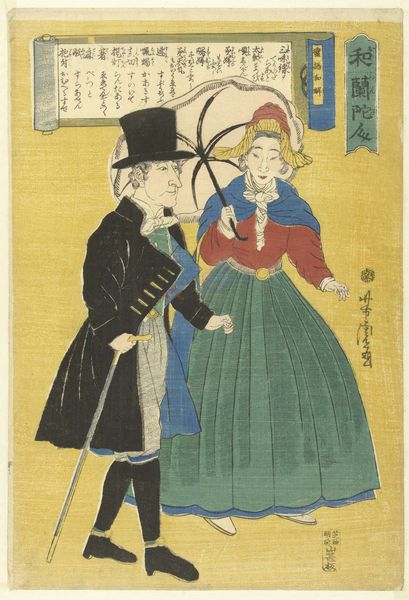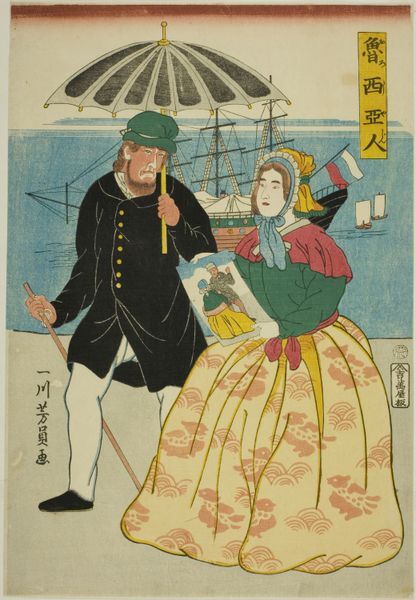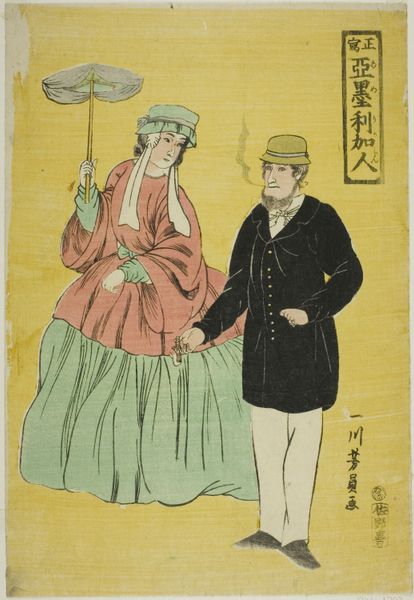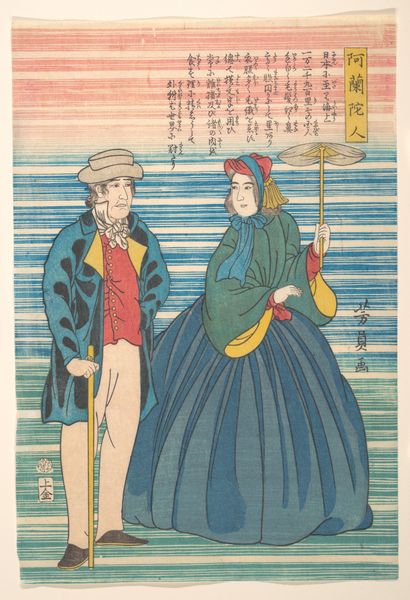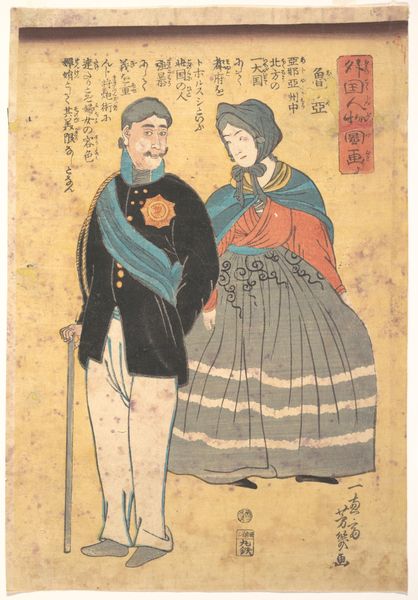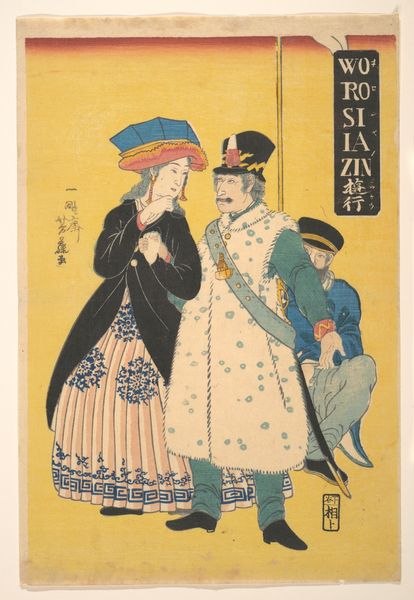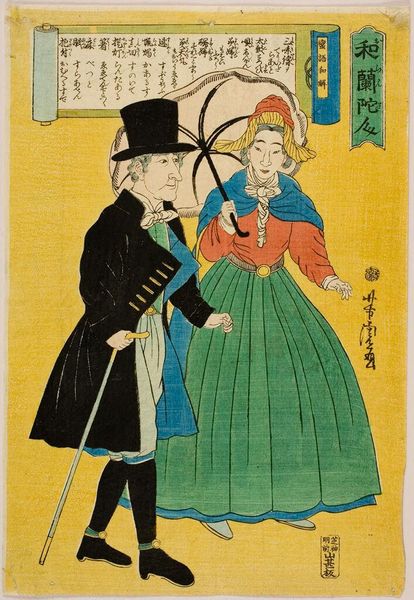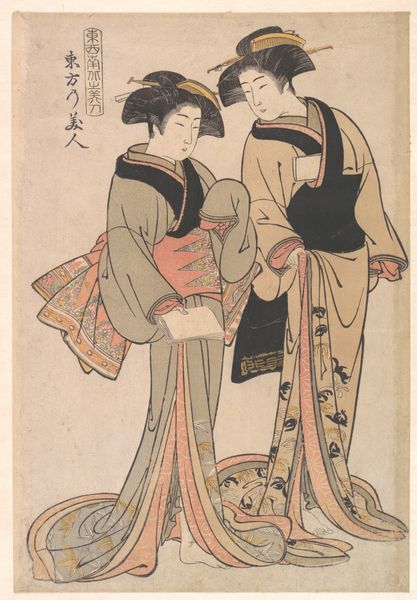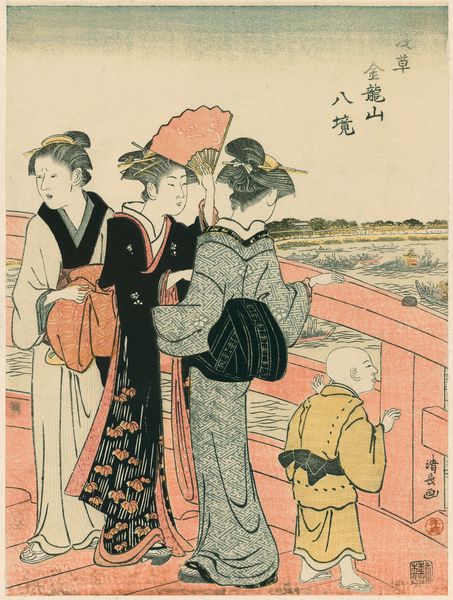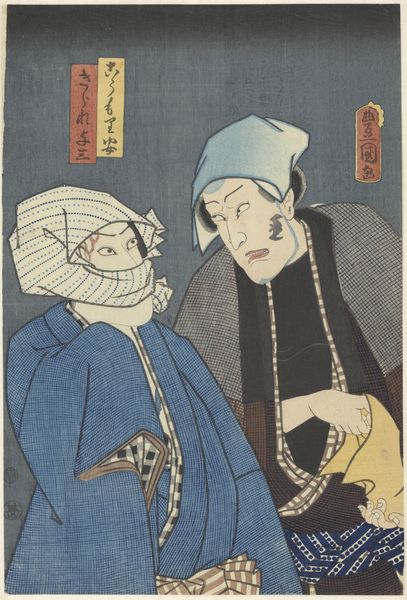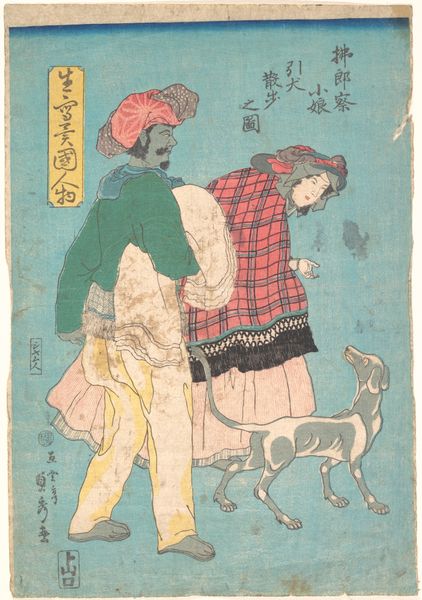
#
portrait
# print
#
asian-art
#
ukiyo-e
#
japan
#
figuration
#
genre-painting
Dimensions: 14 3/4 x 10 in. (37.5 x 25.4 cm)
Copyright: Public Domain
Curator: Let's take a moment to consider this fascinating work, "Russians," crafted by Kunihisa in 1861. It's a vibrant woodblock print, currently housed here at the Metropolitan Museum. It gives us an example of ukiyo-e artistry turned towards observations of unfamiliar cultures. What are your initial impressions? Editor: What strikes me first is the sort of amused detachment in the figures' eyes. It’s like the artist is saying, "Look at these strange birds!" but with affection. The composition itself is so flat, so stylized, but the clothing is rendered with surprising detail. There is definitely a sense of exoticism and a touch of gentle parody in this early genre scene. Curator: Indeed. The artist presents these Russian figures through the lens of Ukiyo-e, a traditional style focusing on 'pictures of the floating world' so the every day; typically scenes of landscapes, theater and courtesans, but here extended to depicting foreigners. This print demonstrates an evolving worldview during Japan's late Edo period. Consider, if you will, the symbols and codes embedded here. The Russian clothing and adornments, slightly exaggerated, are stand-ins for cultural identity. Editor: Absolutely. They’re almost like caricatures, and yet, there's also something quite earnest in the depiction, as though they wanted to capture these visiting Russians in the most meticulous way. I am interested to know more about that cultural exchange. Curator: The Meiji Restoration was approaching, when Japan was on the cusp of opening itself to the West. This print shows that transition, as artists sought to document and understand these previously unfamiliar visitors from other continents, yet remained somewhat tied to tradition. Editor: This print definitely brings us back. It’s charming, slightly strange, but full of a curious sort of respect for the 'other.' I am wondering what those characters scrawled around them meant! Curator: Indeed! Well, I trust our audience feels equipped to delve more deeply into Kunihisa’s visual records of intercultural contact.
Comments
No comments
Be the first to comment and join the conversation on the ultimate creative platform.
